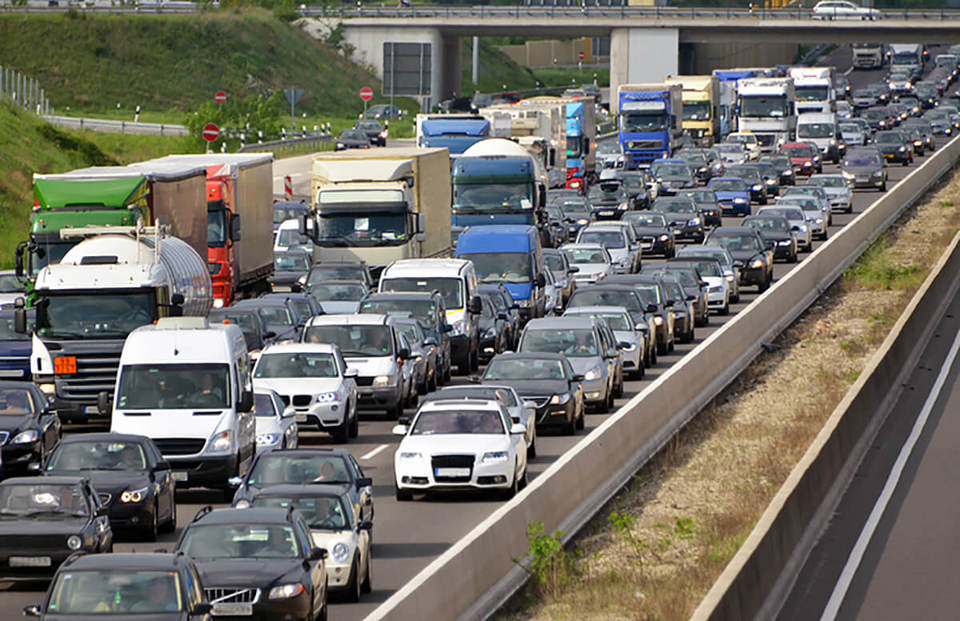Traffic levels are continuing to increase, with the latest data from the Department for Transport (DfT) showing car use was at 85% of what would typically be expected on Monday (July 20).
That’s increased from 70% in the past month and from a low of 27% on the first Saturday of the nationwide lockdown (March 28).
Light commercial and heavy goods vehicle traffic has not dipped as much as car use over the past few months, with commercial fleets continuing to deliver vital goods and services.
HGV traffic was down some 40% at the beginning of April, but has climbed steadily to reach 99% of what would typically be expected on Monday (July 20).
Weekday van traffic fell to as low as 38% (April 2) compared to pre-lockdown traffic levels but hit 97% on Monday (July 20).
However, public transport use continues to remain low, with national rail services carrying just 18% of typical passenger levels.
Public transport in London is showing some signs of recovery, with tubes at 23% of typical levels and London buses 45% (national bus services were 33%) on Monday (July 20).
Driving for Business Challenges
The Government has urged people to return to work as it tries to re-open the economy, but the ‘new norm’ of home working continues to impact travel levels and, according to Licence Bureau, create a whole host of new driving for business challenges.
With home working now an established part of day-to-day business in the wake of the Covid-19 pandemic, and many organisations recognising its potential benefits long term, Licence Bureau believes driving for business is likely to take on a whole new guise and companies need to be aware.
Steve Pinchen, sales director at Licence Bureau, explained: “The working world changed overnight and although restrictions continue to ease as we rediscover some sense of normality, the reality is many aspects of this change will remain – working from home being just one.
“Offering many advantages, what it also does is create potential new challenges for any business which must be addressed.”
Grey Fleet Risk
A recent survey by BT Skills for Tomorrow and Small Business Britain suggests 37% of the UK’s SMEs are planning for less face-to-face contact and around a quarter expect working from home to continue.
Illustrating the potential implications, Licence Bureau points to how working from home gives employees a new ‘normal place of work’ and therefore any car journey, in relation to business, will fall under the ‘driving for work’ banner.
Driving to meet colleagues or popping to the local shop for stationary or a post office trip all come under this umbrella.
Perhaps even more pressing will be the challenges associated with the occasional need to visit the employer’s registered office, which could be a regular occurrence – weekly or monthly – potentially involving a round-trip of hundreds of miles.
For many employees, this journey ‘to the office’ now falls under the banner of a business journey whereby the employer has caused or permitted that travel by car, says Licence Bureau.
Paul Hollick, chair of the Association of Fleet Professionals (AFP), told Fleet News last month, that the increase in home-working could have significant consequences for fleets, with more employees joining the ranks of those that drive their car for work, the so-called grey fleet.
Employers have a legal obligation to ensure that grey fleet vehicles are reasonably safe to use, are fit for purpose and are lawfully on the road.
Companies also typically pay Approved Mileage Allowance Payments (AMAPs) to reimburse fuel used in the course of a work trip at 45p per mile.
“Grey fleet could become a bit of a battleground, because of Covid-19,” warned Hollick. “Employees won’t be office-based (in the future), they’ll be home-based, which means their contract of employment might be changed.
“If the employee is classed as home-based rather than office-based a journey from home to the office will then become a business trip.”
Pinchen says that the new norm poses some very real challenges for organisations to satisfy their duty of care obligations when it comes to business travel.
“Creating awareness of these new challenges is the first step in its proactive management,” he said.
“This is just one example of how the ‘new norm’ impacts on all aspects of business. I am sure that as we continue to settle into a new rhythm of business – more challenges might become apparent that were previously not considered.
“Who would have thought four months ago we would have been exploring the ramifications of the mass adoption of working from home for businesses road safety obligations? Without doubt, change has occurred and we all need to move with it.”






















Login to comment
Comments
No comments have been made yet.